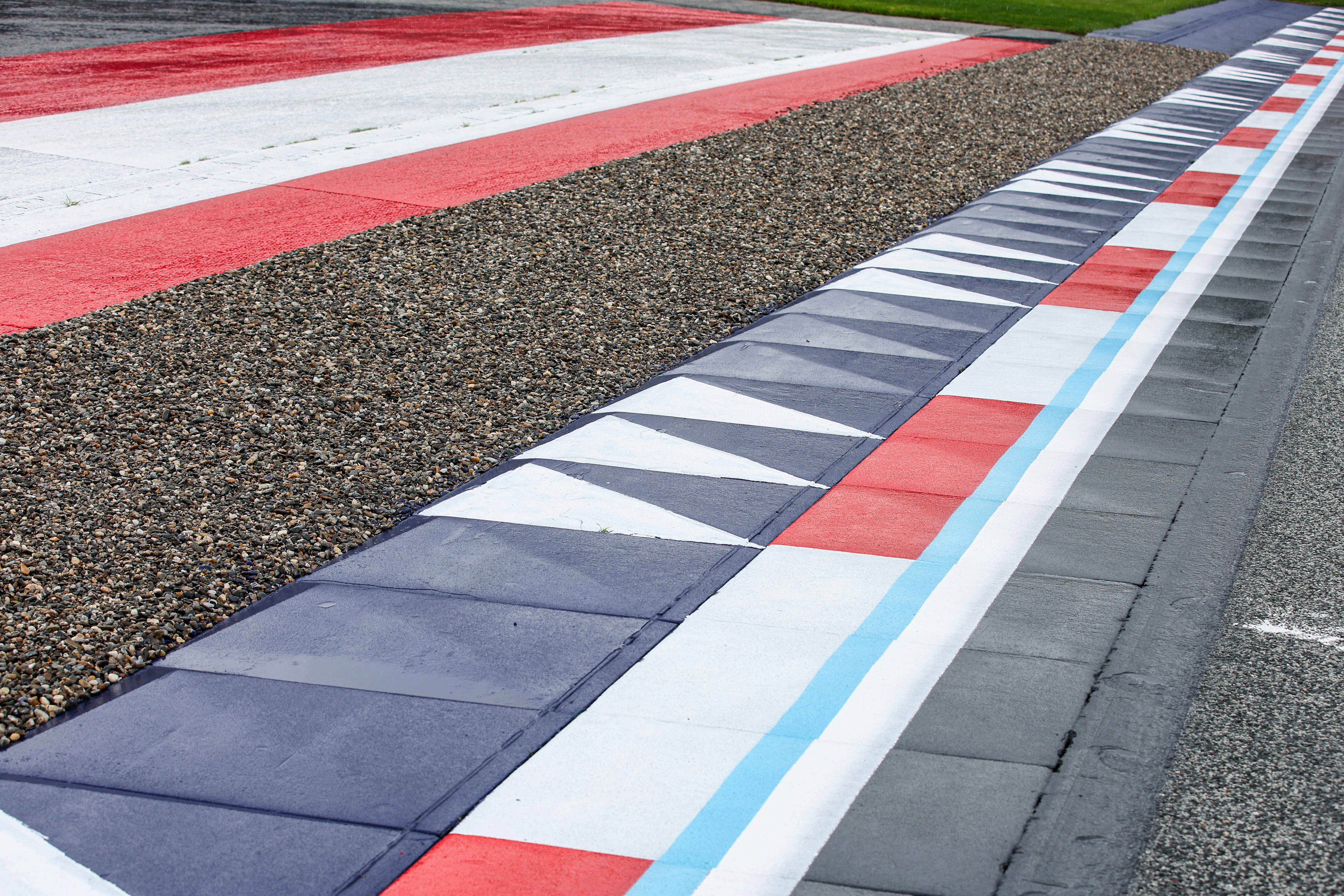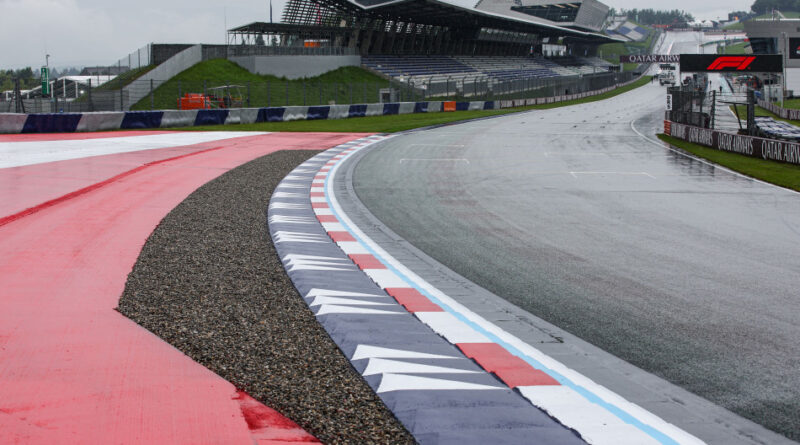F1 – Ringing the changes: How the FIA is finding the limit at the Red Bull Ring thanks to key circuit updates
F1 – Ringing the changes: How the FIA is finding the limit at the Red Bull Ring thanks to key circuit updates
Whenever Formula 1 arrives at the Red Bull Ring, there’s one topic guaranteed to generate heated discussion – track limits. And while the FIA is tackling the thorny issue in a number of ways, this weekend a few simple circuit changes that have proved effective elsewhere are being introduced to make racing simpler, to give the drivers the clarity they need in the heat of battle, and to eliminate doubt, as FIA Formula 1 Race Director Niels Wittich explains…

Q: Simply, what changes have been made at the Red Bull Ring for this year’s event?
NW: Firstly, we have installed a 2.5m wide gravel strip directly behind the kerb at exit of Turn 9 and Turn 10 on the left-hand side and in Turns 1, 3, 4 and 6 we’ve moved the white line to make the distance to the gravel less than 2 metres.
Q: Why have the changes been made?
NW: Obviously track limit control in Austria was problematic last year, as many drivers decided to go a little bit wider at the exit of Turn 9 and 10. It’s not surprising as the asphalt verge behind the kerbs allowed them to put a wheel there and as the grip level was almost the same as on the track they took the opportunity to do it.
Over the years, engineers have found that in terms of lap time it’s quite a good thing to go a little bit wider there so at a certain point that brings us back in the game to say, ‘OK, there are regulations, you have to drive between the white lines’.
There were a huge number of infringements last year and a lot of penalties after the race so clearly something needed to change. Therefore, this year we’re creating a natural deterrent with the installation of a gravel strip and we’re adding more clarity in how we delineate the limits of the track.
Q: What will that mean for Turns 9 and 10? What will the drivers encounter?
NW: They will know where the limit is. That’s what they want and what they have asked for. They will get feedback, they will feel it when they get close to the gravel, and if they do dip a wheel onto the gravel it will penalise them because the car will be slower.
It’s a natural deterrent and that has been the number one request from the drivers. It takes away any temptation to explore the limits because there is no gain anymore. If it’s just a line or just asphalt, drivers and teams will always go to the last millimetre because you can. But when you run over the gravel, it’s impossible to be faster.
Q: Has this been implemented at any other circuit?
NW: Shanghai is the most recent area where we did that [in Turns 10, 12 and 17] and the feedback from the drivers
was very positive.
Q: Were the alterations easy to put in place at the Red Bull Ring?
NW: The ‘problem’ we had is that the kerb width is two metres. So the time was just too short to say, ‘OK, we’re going to take away the second kerb, put the gravel right behind’. That would be the perfect set-up, similar to what we had in China, to go for a one-metre kerb and then gravel, because a two-metre wide Formula 1 car, it’s just history with the track limits.
So we have a slightly different solution, which is to artificially shorten the width of the kerb by moving the white line on the kerb, as the first part of the kerb is almost flat. So, what you’ll see is that white line on the kerb has moved and now there a light blue line behind just to make it easy for the marshals, for the guys at the Remote Operations Centre (ROC) and for us in Race Control to identify when a driver’s over the limit, because then you have the white line, the light blue line, black tyre – there a clear visual difference.
We had the same blue lines in Barcelona, in Turns 5, 9, 12 and 13. As I said, the idea is to make it easy to identify if a tyre is off – a straight yes or no. The light blue line will help us just to differentiate between a driver being off or not.
Q: Does it have any affect on calls on track limits infringements?
NW: The track limit judgement is still the same. Once there’s no part of the car on the white line, that’s it. This is just to help. In the past it was a painted white line against a white kerb. So it was not 100% to say, ‘OK, we think the tyre is off, yes, but we can’t prove it because it’s white line, white kerb’. Now, you’ll see black tyres on the light blue. Nothing is in contact with the white line anymore. Job done. The driver is out.
Q: The gravel strip has been used at the Chinese Grand Prix and here. Will it be used at other venues?
NW: The hope now is that it can be applied wherever necessary. Gravel is not expensive and it is an easy fix for most circuits. For example, I think a month or so after the Formula 1 Austrian Grand Prix, MotoGP will be at the Red Bull Ring. As they do not like the transition from kerb to gravel strip to a sealed surface again, they will then put some asphalt back in and just remove the gravel strip and store it. For next year, they’ll just dig out the asphalt and put the gravel back in. Or in an ideal world, they would remove the second kerb and put the gravel close to that.
Q: What has been done in Turn 4?
NW: The kerb has been narrowed by moving the white line, so the distance to the gravel is now 1.8 metres. Just to make sure, that even with, say, F3, if they put a wheel in the gravel, there’s no discussion with track limits. We have also moved the white lines in Turns 1, 3 and 6 to create the same 1.8-metre distance to the gravel.
For example, in Turn 4, if a driver goes wide, there’s just the verge and the gravel, but he could be just off. And this is similar to Turn 12 in Spain, where the verge required from the bikes is overall 2 metres or more. So if a driver just uses the normal racing line, he might exceed the track limits. And therefore, in Spain we tripled the white line just to remove that track limit topic. But this is the latest spec created by the FIA to help circuits with hosting both bikes and cars and to keep everyone happy.
Q: Are changes such as these planned for anywhere else?
NW: There are racetracks that are more affected than others by track limits and there are some that need no alteration. At Zandvoort, for example, it’s all natural track limits. But there are other circuits, such as Austin, where you have some track limit areas where we would like to implement this or something similar, creating a natural deterrent. For example, In Austin, at the
exit of Turn 19 there’s a very wide run-off and at the exit of 12 there’s a very wide asphalt run-off. We look at every circuit to see where improvements can be made.
It’s a constant process.

A light blue line now clearly separates the white line from the kerb making calls on infringements easier, says Wittich.

